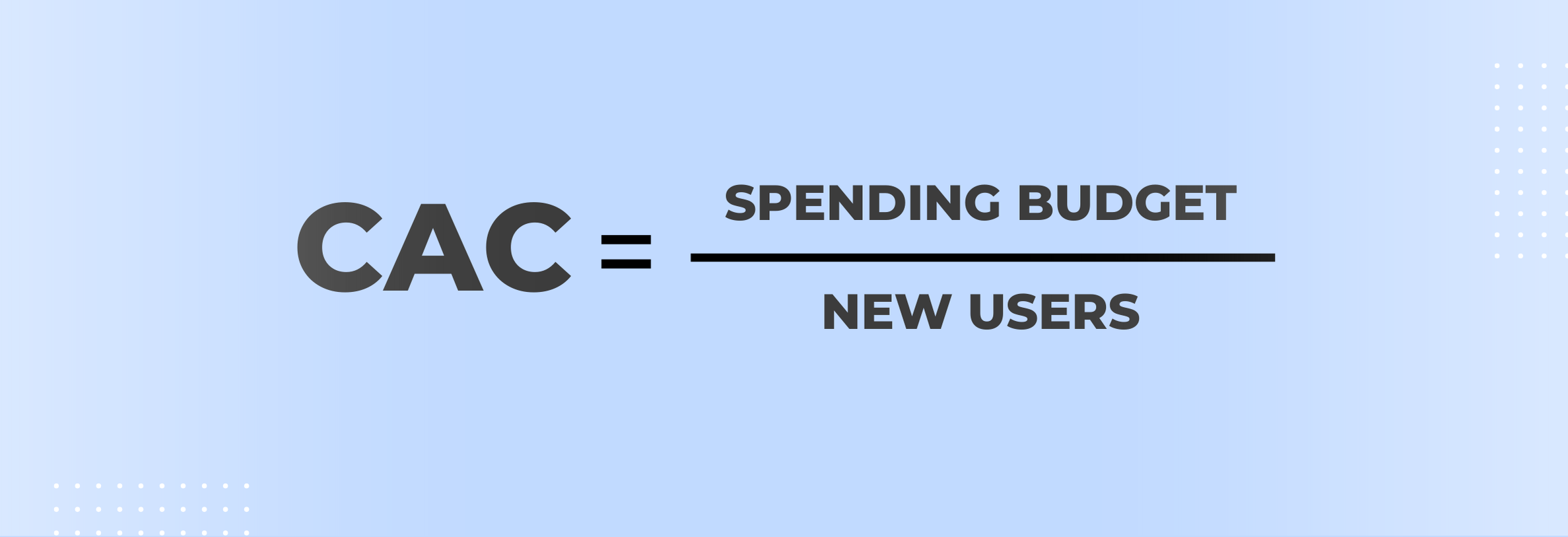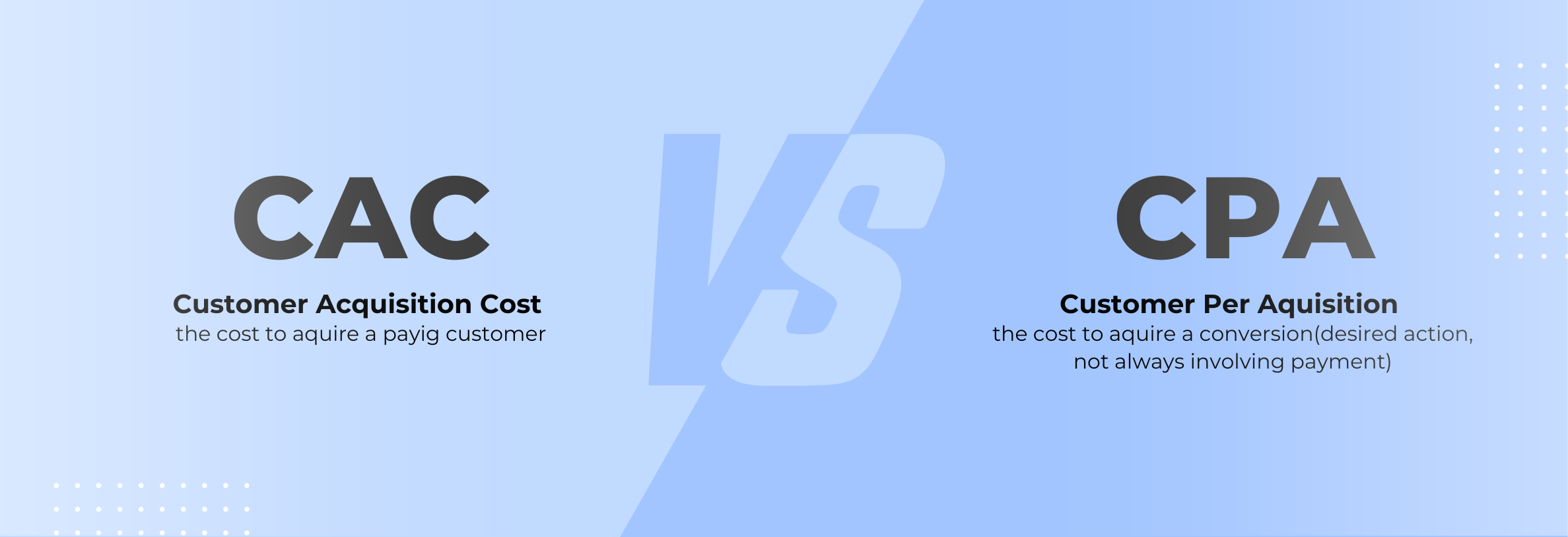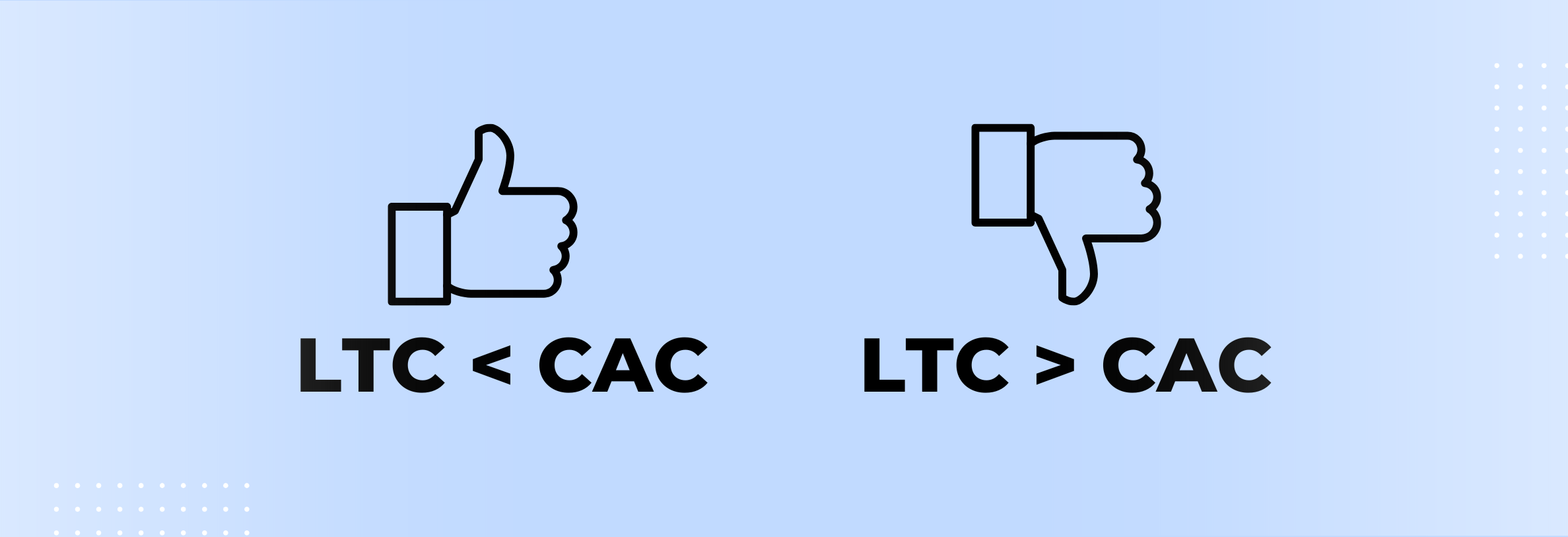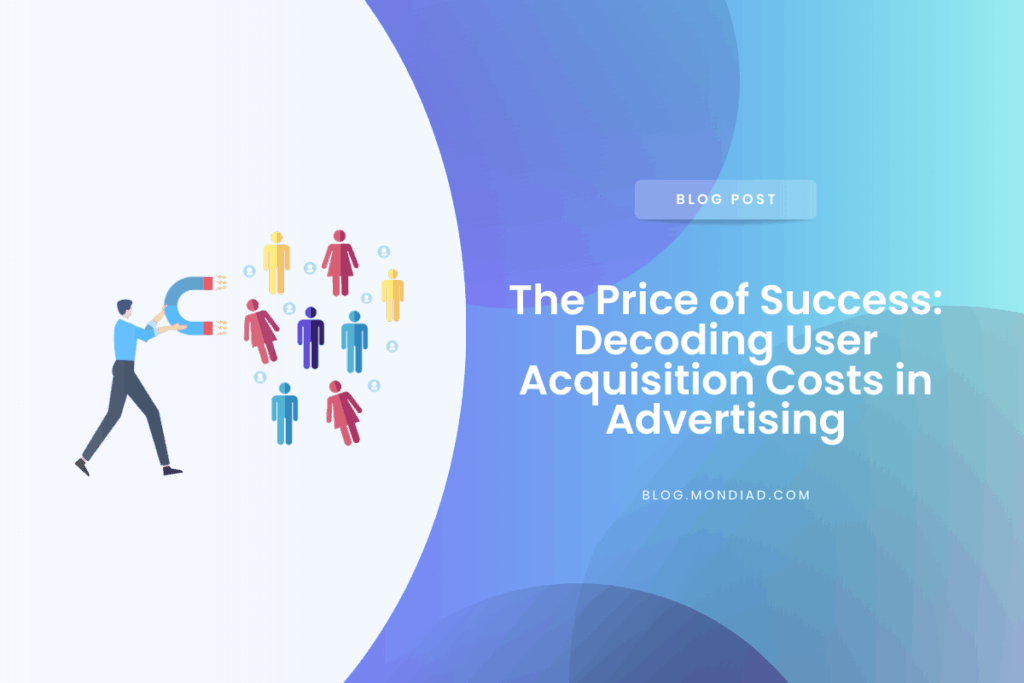Being in the green is not supposed to be hard. Advertising might be complex, but once you get the hang of it, the profit is real. For start, how about we dig in some metrics?

User Acquisition Cost (UAC) is one of the most critical metrics in digital advertising and affiliate marketing, yet not everyone fully understands it. It measures how much a company spends to acquire a new customer, yet it’s often misunderstood or confused with Cost Per Acquisition (CPA).
But the real question is—how expensive is UAC, and what factors influence its cost? Let’s dive in.
What Is User Acquisition Cost?
Customer/User Acquisition Cost, or CAC/UAC is the total cost associated with acquiring a new user, typically calculated by dividing the total marketing expenses by the number of acquired users.
This metric helps advertisers understand their return on investment (ROI) and optimize their campaigns for better profitability.
In simpler words, CAC measures the total cost of your advertising efforts to earn a new customer in a specific time period.
The formula is as simple as it gets. Divide all the costs spent on acquiring new customers (ad budget) by the number of customers acquired in the same time period.

Imagine you run an online store and spend $5,000 on digital advertising in one month. During that same month, you acquire 250 new customers.
CAC=Total Marketing Spend/Number of New Customers -> CAC=5000/250=20
So, your CAC is $20, meaning you spent $20 to acquire each new customer. If each customer brings in an average revenue of $100, then your acquisition cost is justified. However, if your average customer only generates $15 in revenue, you may need to optimize your marketing strategy to reduce costs.
The Difference Between CPA and CAC

Customer Acquisition Cost (CAC) and Cost Per Acquisition (CPA) are often used interchangeably, but they measure different aspects of marketing and sales expenses.
- CAC (Customer Acquisition Cost) refers to the total cost of acquiring a new customer, including all sales and marketing expenses over a specific period. It provides a big-picture view of how much a business spends to gain each paying customer.
- CPA (Cost Per Acquisition) is a campaign-specific metric that calculates the cost of acquiring a conversion, which could be a sale, lead, signup, or other desired action. CPA focuses on individual marketing efforts rather than overall business spending.
Key Differences
| Metric | Definition | What It Measures | Cost Components | Scope |
|---|---|---|---|---|
| CAC | The total cost of acquiring a paying customer | Business-wide acquisition costs | Marketing, sales, salaries, tools, overhead | Long-term company growth |
| CPA | The cost of a single conversion (sale, signup, lead, etc.) | Performance of a specific campaign | Ad spend, bidding costs, campaign expenses | Short-term campaign efficiency |
- A company spends $10,000 on sales and marketing in a month and acquires 500 new paying customers → CAC = $20
- A PPC campaign spends $1,000 and generates 100 conversions (leads, sales, or signups) → CPA = $10
While CPA helps measure the effectiveness of individual campaigns, CAC provides insight into the overall sustainability and profitability of the business.
Why Does Customer Acquisition Cost Matter?
CAC is crucial because it directly impacts profitability, marketing efficiency, and business growth.
- Measures Profitability – Ensures acquisition costs don’t exceed customer lifetime value (LTV).
- Optimizes Marketing Spend – Helps allocate budgets effectively by identifying high-performing channels.
- Supports Business Growth – Keeps customer acquisition scalable and cost-effective.
- Identifies Inefficiencies – Rising CAC signals issues like poor targeting or weak conversion rates.
- Improves Sales Strategies – Informs pricing, upselling, and retention efforts to maximize ROI.
By monitoring and optimizing CAC, businesses can drive sustainable growth and long-term success.
Factors That Influence UAC
Several elements impact the cost of acquiring a new user:
Traffic Source & Ad Network
Different traffic sources come with varying costs. For example, paid search ads may have a higher CPC compared to social media ads or push notifications.
Industry & Vertical
Certain industries, like finance or health, tend to have higher UAC due to competition and strict advertising regulations.
Ad Format
The choice between push, popunder, native, or banner ads affects acquisition costs. Some formats offer higher engagement at lower costs.
Targeting & Audience Segmentation
Highly specific targeting increases costs but can lead to better conversion rates.
Ad Creative & Landing Page Optimization
A well-designed ad and optimized landing page can lower costs by improving conversion rates.
Seasonality & Trends
Demand spikes during peak seasons (e.g., Black Friday, Christmas) can increase UAC due to higher competition.
Campaign Optimization & Automation
Smart bidding strategies, AI-driven campaign automation, and Target CPA bidding can help lower UAC over time.
What Is a Good Customer Acquisition Cost?

UAC isn’t necessarily “expensive” or “cheap” in absolute terms—it depends on your campaign strategy, industry benchmarks, and ROI. A high UAC can still be profitable if customer lifetime value (LTV) exceeds the acquisition cost.
For example, if your UAC is $20 but your average customer brings $100 in revenue over time, then the cost is justified. However, if you’re spending $50 to acquire a user who only generates $30, then your strategy needs adjustments.
How to Reduce User Acquisition Costs
To make UAC more affordable, consider these strategies:
- Optimize Campaigns – Regularly test ad creatives, landing pages, and targeting to improve conversion rates.
- Leverage Automation – Use AI-based tools to optimize bidding and budget allocation.
- Diversify Traffic Sources – Experiment with different ad networks and formats to find the most cost-effective channels.
- Retargeting & Engagement Strategies – Focus on retaining acquired users through remarketing and loyalty programs.
- Analyze Data & Iterate – Continuously analyze performance metrics and adjust campaigns accordingly.
TLDR…
User Acquisition Cost is a crucial metric for advertisers and affiliates, but whether it’s expensive depends on industry benchmarks, competition, and the effectiveness of your marketing efforts. By focusing on optimization, automation, and strategic targeting, advertisers can keep UAC at an optimal level while maximizing profits.

Interested in lowering your UAC while improving conversions? Get in touch with our team to explore the best advertising solutions for your business!
